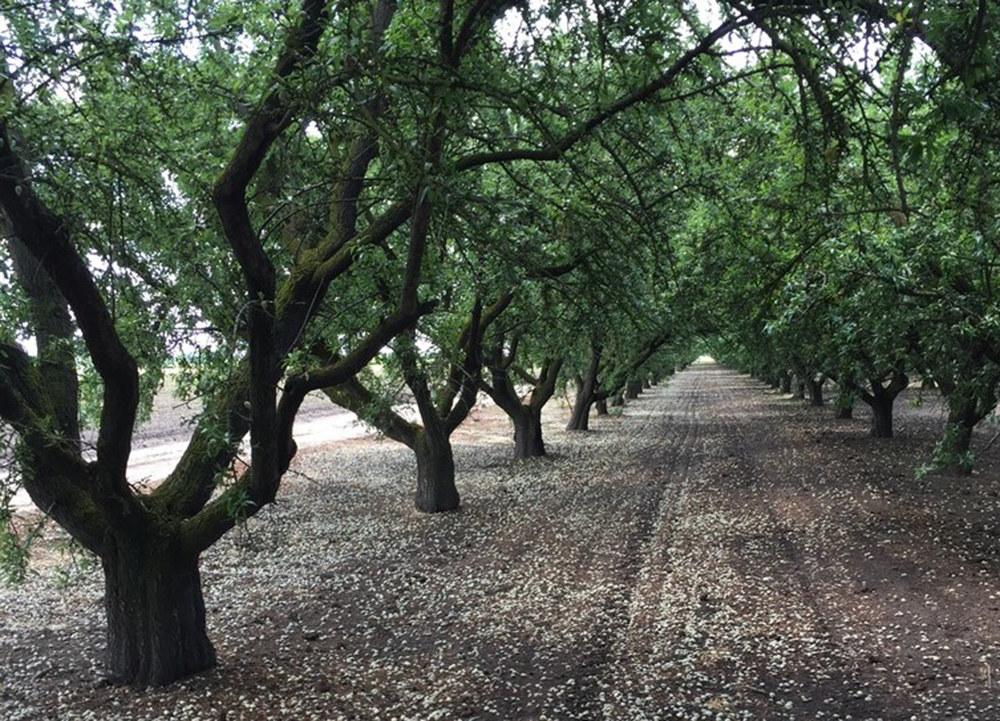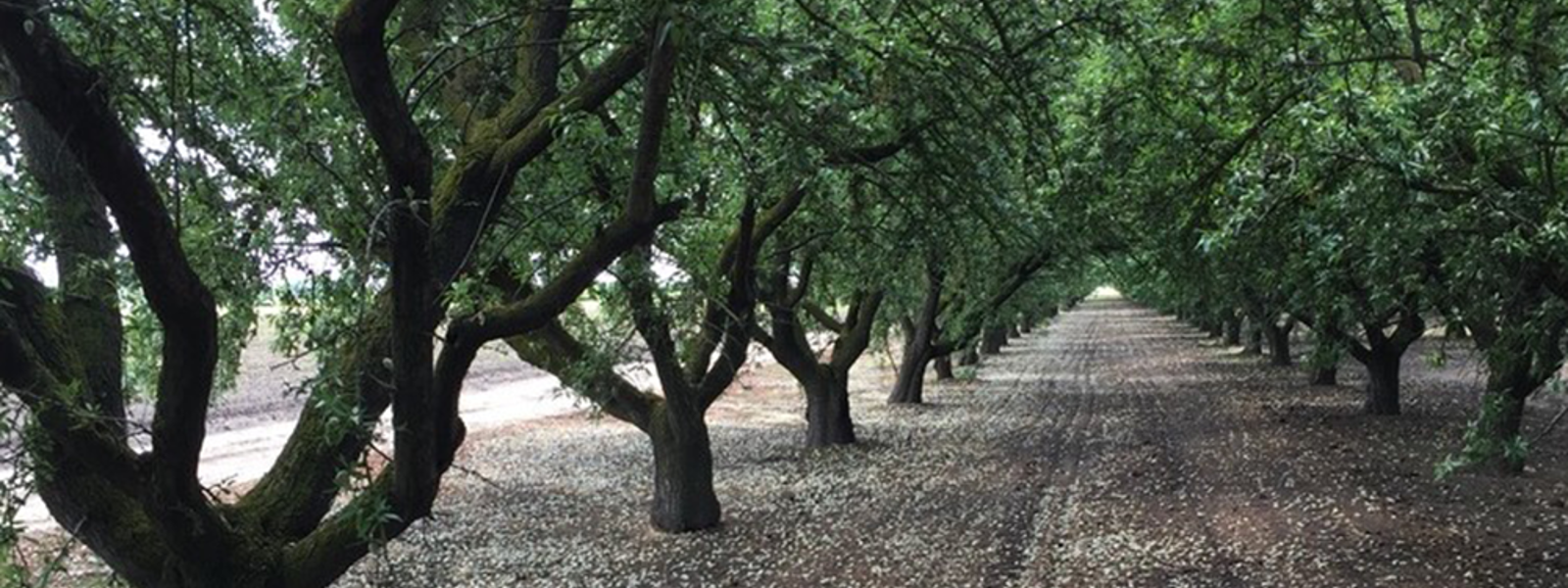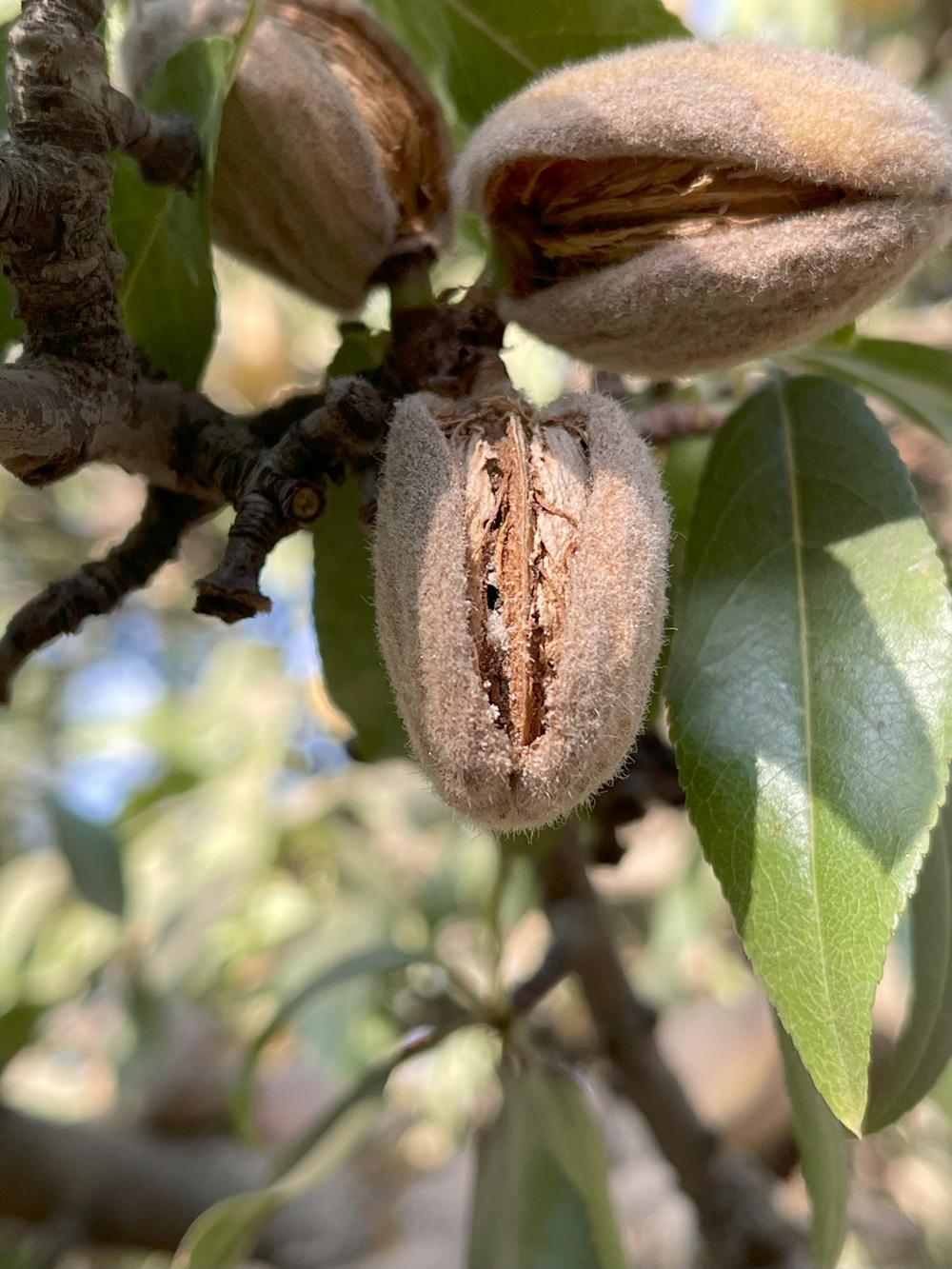New beetle targeted as emerging threat to nut crops

University of California researchers and almond growers are seeking solutions for controlling the carpophilus beetle, a newcomer to the state that is an established pest in Australia.
Photo/Jhalendra Rijal/University of California Cooperative Extension


Photo/Houston Wilson/University of California Cooperative Extension

Photo/Jhalendra Rijal/University of California Cooperative Extension
By Vicky Boyd
Although researchers have begun unraveling some of the mysteries surrounding a new beetle pest for tree nuts, they say they still have more questions than answers.
“That’s why it’s scary to talk about this beetle because there are so many things we don’t know and only very few things we do know about its behavior,” said Jhalendra Rijal, a University of California Cooperative Extension integrated pest management advisor for the northern San Joaquin Valley.
To try to gain answers about the new carpophilus beetle, UC researchers have developed a plan funded by the Almond Board of California and California Pistachio Research Board. Among the research objectives are determining the beetle’s phenology, or life cycle, under California conditions, confirming the beetle’s distribution within the tree canopy and evaluating chemical controls.
The California researchers are collaborating with counterparts in Australia, who have dealt with the pest for more than a decade in almonds, said Houston Wilson, an associate UCCE specialist at the UC Kearney Agricultural Research and Extension Center in Parlier. They hope to obtain pest trapping pheromone lures, developed in Australia but not yet commercially available, to evaluate them for use in monitoring traps in California.
So far in Australia, the only successful management tool is winter sanitation, in which growers remove mummy nuts, or those left on the tree after harvest, and finely shred them to kill overwintering carpophilus beetles and destroy their preferred host material.
UC researchers were able to determine this winter that carpophilus beetles overwinter as adults in mummy nuts that have fallen on the ground, Rijal said. As temperatures warm in spring, adults emerge, mate and lay eggs likely on other ground mummies, which serve as food for larvae once they hatch. That’s why winter sanitation and chopping mummies is crucial to manage the pest, he said.
How many beetle generations occur from spring until hull split remains unknown as researchers seek answers. Along with Rijal and Wilson, researchers in the effort include: David Haviland, a UC entomology farm advisor in Kern County; Sudan Gyawaly, a Sacramento Valley pest management advisor; and Raman Bansal with the U.S. Department of Agriculture Agricultural Research Service.
Damage caused by the carpophilus beetle came to light in 2023 when it was found infesting almond and pistachio orchards in Stanislaus, Merced, Madera and Kings counties. Since then, Rijal has found it in one walnut orchard in Hartley and Eureka varieties after harvest. He said he wasn’t surprised since the pest has been reported infesting that crop in Argentina, Italy and Australia.
Broader surveys conducted by Wilson and colleagues have now confirmed the presence of carpophilus beetles throughout Central Valley nut orchards, and they believe it may have been in the state for at least a few years but went undetected.
“Since sanitation is the main way to control it,” Wilson said, “I’m guessing that the extreme lack of sanitation in 2023 allowed this thing to build up more of a population to the point where it came across our radar.”
In Australia, where the carpophilus beetle has plagued almond orchards since 2013, producers see an average of 3% to 5% damage, Rijal said. By comparison, the navel orangeworm, the main insect pest of California almonds, cause an average of less than 1% damage statewide, except for 2023 when numbers exploded.
Known scientifically as Carpophilus truncatus, the newcomer is a member of a sap beetle group that also includes dried fruit beetles, which are considered secondary pests of overripe fruit. But Rijal said he didn’t know of any cases in which dried fruit beetles directly damaged nuts in trees. If PCAs or growers see the beetle feeding inside a nut, he said it should be the new species, C. truncatus.
The tiny, dark beetle, measuring about 0.1 inch, often goes unnoticed. Adults can be found between the shell and hull after hull split. They also burrow into nut shells along the suture, creating pinhole-sized openings.
Females lay eggs that resemble small grains of rice. Newly hatched larvae also make their way into the nut, where they and adults feed.
Research trials have not yet been conducted on almond variety susceptibility. But based on casual observations of infested orchards, Rijal said varieties with soft shells and weaker sutures, such as nonpareil, Monterey and Independence, appear more susceptible than those with hard shells and tighter seals.
Often, piles of white, powdery material can be seen near the end of infested nuts after hull split. The material includes insect frass, or excrement, and fine nutmeat.
When UCCE advisors have shown images of the telltale signs of beetle damage during grower meetings, they said many PCAs and growers told them they had also seen it but didn’t think it was concerning.
Internally, both carpophilus and NOW larvae may be found feeding on the same kernel. Young larvae of both pests look similar at a glance, but beetle larvae have a forked tail and NOW larvae don’t.
As they move through the growth stages, or instars, NOW larvae become significantly larger. By the time they reach the fifth and last instar before they pupate, the beetle larvae are about one-fourth the size of NOW larvae.
Inside the nut shell, feeding by carpophilus beetle larvae generates a fine white powdery substance. They also leave behind the kernel’s brown skin in the case of almonds. The damage is different from that caused by ants, which may consume the entire kernel, hollowing out the nut without leaving frass and webbing.
NOW larvae, on the other hand, leave behind larger, more granular frass that’s darker in color and with much more webbing.
UCCE advisors are asking growers and pest control advisors to be on the lookout for C. truncatus and report suspected finds to their local UCCE office and county agriculture commissioner.
(Vicky Boyd is a reporter in Modesto. She may be contacted at vlboyd@att.net.)




